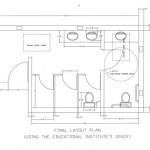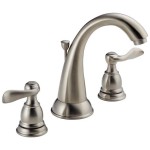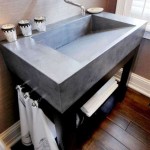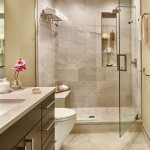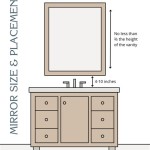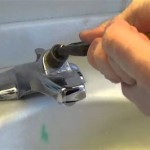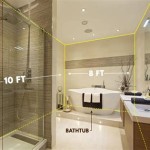Bathroom Exhaust Fan Light Cover Replacement: A Comprehensive Guide
Bathroom exhaust fans are crucial components of a healthy and comfortable home environment. They serve to remove moisture, odors, and pollutants that accumulate in the bathroom during and after showering or bathing. Many exhaust fans incorporate a light fixture, often covered by a lens or cover, to provide illumination. Over time, these covers can become damaged, discolored, or simply outdated. Replacing a bathroom exhaust fan light cover is a relatively straightforward task that can improve the appearance and functionality of the bathroom. This article provides a comprehensive guide to safely and effectively replacing a bathroom exhaust fan light cover.
A cracked, yellowed, or missing light cover not only detracts from the bathroom's aesthetics but can also pose safety risks. Damage may expose the light bulb to moisture, potentially leading to electrical hazards. Furthermore, a broken cover may allow dust and debris to enter the fan housing, potentially affecting the fan's performance and longevity. Therefore, timely replacement of the light cover is essential for safety, aesthetics, and the proper functioning of the exhaust fan.
Before undertaking any electrical work, safety precautions must be prioritized. Turning off the power to the circuit that serves the bathroom exhaust fan is paramount. This can be achieved by locating the corresponding circuit breaker in the electrical panel and switching it to the "off" position. It is crucial to verify that the power is indeed off by testing the light fixture with a non-contact voltage tester. This device will indicate the presence of electricity without requiring direct contact with the wires. Ensuring the power is completely off is the most important step in the entire process.
Once the power is disconnected, gather the necessary tools and materials. Typically, this includes a replacement light cover, a screwdriver (usually a Phillips head or a flathead, depending on the type of screws used), a ladder or step stool to reach the fan, and safety glasses to protect the eyes from dust and debris. The replacement light cover should be compatible with the existing exhaust fan model. Taking the old cover with you when purchasing a replacement or noting the model number of the fan beforehand can ensure a proper fit. If you're unsure about the compatibility, consult the exhaust fan's manual or contact the manufacturer for assistance.
Identifying the Correct Replacement Cover
Accurately identifying the correct replacement light cover is crucial for a successful installation. There are several factors to consider, including the dimensions of the cover, the type of mounting mechanism, and the specific model of the exhaust fan. Purchasing a cover that is too large or too small will prevent it from fitting properly, and a cover with an incompatible mounting system will be impossible to install. The most reliable method for finding the right replacement is to identify the model number of the exhaust fan unit itself.
The model number is usually located on a sticker or plate affixed to the fan housing. This sticker may be visible by removing the existing light cover or by carefully peering into the fan housing. Once the model number is identified, it can be used to search online retailers or contact the manufacturer directly for the correct replacement part. Many online retailers offer parts finders that allow users to input the model number and receive a list of compatible components, including light covers. Alternatively, taking the old light cover to a hardware store or home improvement center can allow a sales associate to assist in finding a suitable replacement.
When searching for a replacement, pay attention to the material and finish of the cover. Common materials include plastic, glass, and acrylic. The finish may be clear, frosted, or textured. Choosing a replacement with a similar material and finish will help maintain the aesthetic consistency of the bathroom. In addition, consider the light bulb type used in the fixture. Some light covers are designed specifically for incandescent bulbs, while others are compatible with LED or CFL bulbs. Ensure that the replacement cover is suitable for the type of bulb used to avoid overheating or other issues.
The mounting mechanism is another important consideration. Some light covers are held in place by screws, while others use clips or a twist-lock system. Examine the existing light cover to determine the type of mounting mechanism used and ensure that the replacement cover uses the same system. If the replacement cover uses a different mounting system, it may be necessary to modify the fan housing or purchase additional hardware to complete the installation.
Removing the Old Light Cover
The process of removing the old light cover will vary depending on the type of mounting mechanism used. For covers held in place by screws, use a screwdriver to carefully remove the screws. Store the screws in a safe place, as they may be needed to install the new cover. For covers that use clips, gently pry the clips open with a screwdriver or your fingers. Be careful not to apply too much force, as this could damage the clips or the fan housing. For covers that use a twist-lock system, rotate the cover counterclockwise until it disengages from the fan housing.
Before completely removing the old light cover, inspect the area around the fan housing for any accumulated dust or debris. Use a vacuum cleaner or a damp cloth to clean the area. This will help prevent dust from falling into the bathroom during the installation process and will also improve the performance of the exhaust fan. Once the area is clean, carefully remove the old light cover and set it aside.
After removing the old light cover, inspect the light bulb and the light socket. If the light bulb is burned out, replace it with a new bulb of the same type and wattage. Check the light socket for any signs of damage, such as cracks or corrosion. If the socket is damaged, it may need to be replaced. Replacing a light socket is a more complex task that may require the assistance of a qualified electrician.
While the light cover is removed, take the opportunity to inspect the fan itself. Look for any signs of damage or excessive dust buildup. If the fan blades are dirty, use a vacuum cleaner or a damp cloth to clean them. Removing dust from the fan blades will improve the fan's performance and efficiency. If the fan is making unusual noises, it may need to be lubricated or replaced. Refer to the manufacturer's instructions for specific maintenance recommendations.
Installing the New Light Cover
With the old light cover removed and the area cleaned, the new light cover can be installed. Follow the reverse of the removal process, ensuring that the cover is properly aligned and securely fastened. For covers held in place by screws, align the screw holes and tighten the screws until the cover is snug. Avoid over-tightening the screws, as this could damage the cover or the fan housing. For covers that use clips, align the cover with the clips and gently press until the clips snap into place. For covers that use a twist-lock system, align the cover with the fan housing and rotate it clockwise until it locks into place.
After installing the new light cover, double-check that it is securely attached and that there are no gaps or loose connections. A loose light cover could vibrate and make noise when the fan is running. It could also potentially fall down, posing a safety hazard. Once you are satisfied that the light cover is properly installed, restore power to the circuit by switching the circuit breaker back to the "on" position.
Test the light fixture to ensure that it is working properly. If the light does not turn on, check the light bulb to make sure it is not burned out. Also, check the light socket for any loose connections. If the light still does not work, there may be a problem with the wiring or the light switch. In this case, it is best to consult a qualified electrician.
Finally, clean up any tools or materials that were used during the installation process. Dispose of the old light cover properly. If the old cover is made of plastic, it can be recycled. If it is made of glass, it should be disposed of carefully to avoid injury. By following these steps, one can successfully replace a bathroom exhaust fan light cover and restore the functionality and appearance of the bathroom.

Broan Replacement Light Lens Cover For Bathroom Fans S97011813

Bathroom Ventilation Fan Light Lens Cover Replacement For Nutone Broan 678 679a

Broan Polypropylene Replacement Bath Fan Light Lens At Com

5s1201017 Air King Exhaust Fan Light Lens

Grilles Covers And Upgrade Kits

Broan Replacement Grille Cover In The Bathroom Fan Parts Department At Com

Vent Fan Cover 5x9in For Nutone Broan Bathroom Hoods Light Lens Van Replacement Com

Broan Polypropylene Replacement Bath Fan Light Lens At Com

Broan S97013662 Bathroom Exhaust Fan Grille With Light Lens White For

Bathroom Fan Parts At Com
Related Posts
